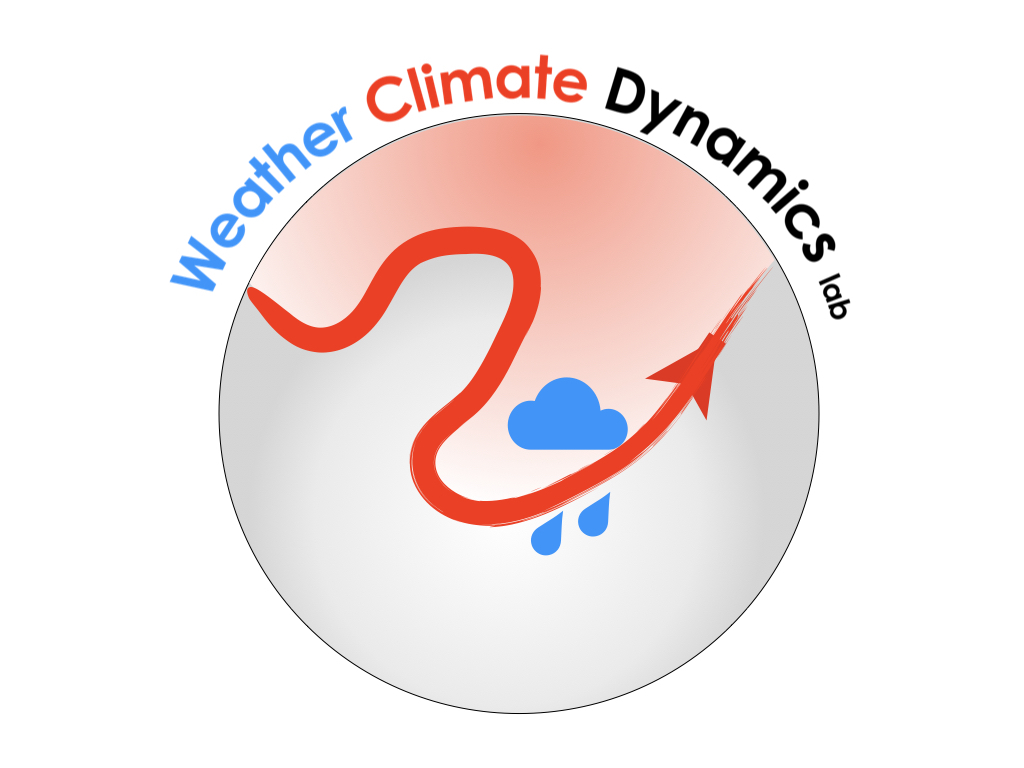Lapeyre and Held moist model
Contents
Lapeyre and Held moist model#
Dry model#
The dry model is govern by a classical two layer QG model, with a flat topography and the inclusion of Ekman’s dissipation in the lower layer. The starting model behaves as the following:
In the above equations \(F_i\) with \(i= 1,2\) refers to small scale dissipation, \(f_0\) is the coriolis parameter and \(S= \frac{(LP - R)H_2}{C_p \delta \Theta}\) is set as the mass exchange between layers. where \(L\) is the latent heat, \(P\) the precipitation per unit mass, \(C_p\)
Where the potential vorticity behaves as following:
Moist inclusion#
The moist is set to be en lower layer and departs from a reference value \(m_0\) which refers to the mixing ratio. The evolution of the moisture can be write as:
where \(\nabla \cdot \textbf{u}_2\) refers to ageostrophic divergence, which is linearize in order to mantain a QG framework. In this case the moisture is set to ve advected by agestrophic and geostrophic winds.
With the inclusion of latent heat there is a disruption with the conservation of potential vorticity. This leads to the formation of a moist potential vorticity, which is going to be located in the lower layer. The moist potential vorticity behaves as:
Model equations#
The above equations are set to be nondimensionalize by using a length scale equal to \(\lambda\) the Rossby deformation radius and a time scale of \(\lambda /U\) where U refers to the zonal flow in each layer where \(U= U_1 - U_2\). With this the following are set to be the fundamental equations to advance in time:
Expressions (46) (47) remain as a nondimensionalize version of the classical two layer QG, where \(\mathcal{L} P\) is set to be the influence of the latent heat in the model. equation (48) is set to be the moisture content evolution, where \(\nabla \cdot \textbf{u}_2\) refers to the ageostrophic divergence. The evolution of the moist PV is set as the equation (49).
Where the potential vorticities and material derivatives in the nondimensional version behaves as follow:
The inversion relation propose for the nondimensionalize equations behaves the same way as the expression seen in the dry two layer QG model ((32) and (33))
The nondimensional parameters are set as following:
Where the \(\mathcal{E}\) refers to the ratio of the evaporation per unit mass. \(\mathcal{L}\) is the strenght of the latent heat and \(\Gamma\) is the imposed meridional gradient of the moist PV.
Following (Lutsko & Hell, 2021) they define the moist sturation (\(m_s\)) value as \(m_s = \mathcal{C}(\psi _1 - \psi _2)\). With this the precipitation is set to happen whenever \(m > m_s\) where the precipitation acts in order to reduce moisture back to it’s saturated value. This leads to the following expression for the precipitation.
At last the linearized ageostrophic divergence is set as follow:
Parameters#
Following (Lapayre and Held, 2004) the model is set in a double periodic domain, where \(L_x = L_y = 18 \pi \lambda \) where \(\lambda = 1000 km\) and the mean flow is set to \(U = 20 m/s\). Finally the dry model accounds for \(\mathcal{B} = 0.78\) and \(\mathcal{R} = 0.16\) values that represent a super critical state. the strength of latent heat \(\mathcal{L}\) is set to 0.2 and the linearized Clausius-Clapeyron parameter (\(\mathcal{C}\)) is equal to 2.
